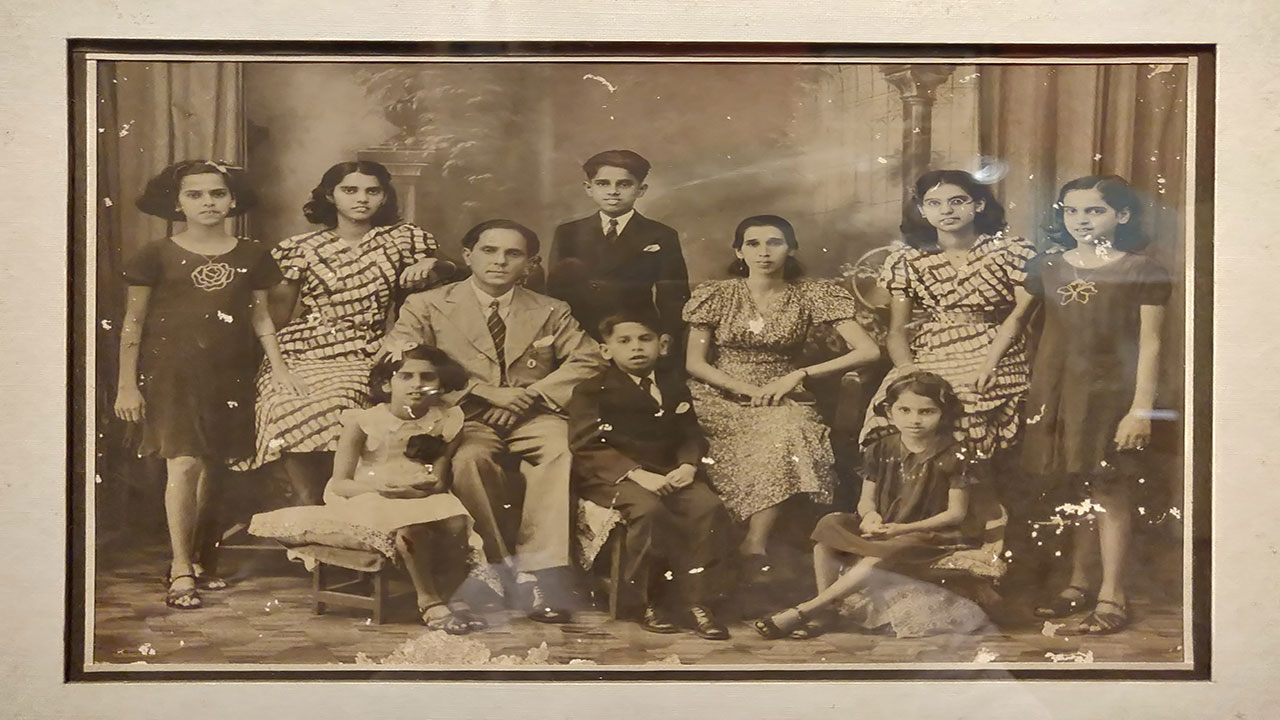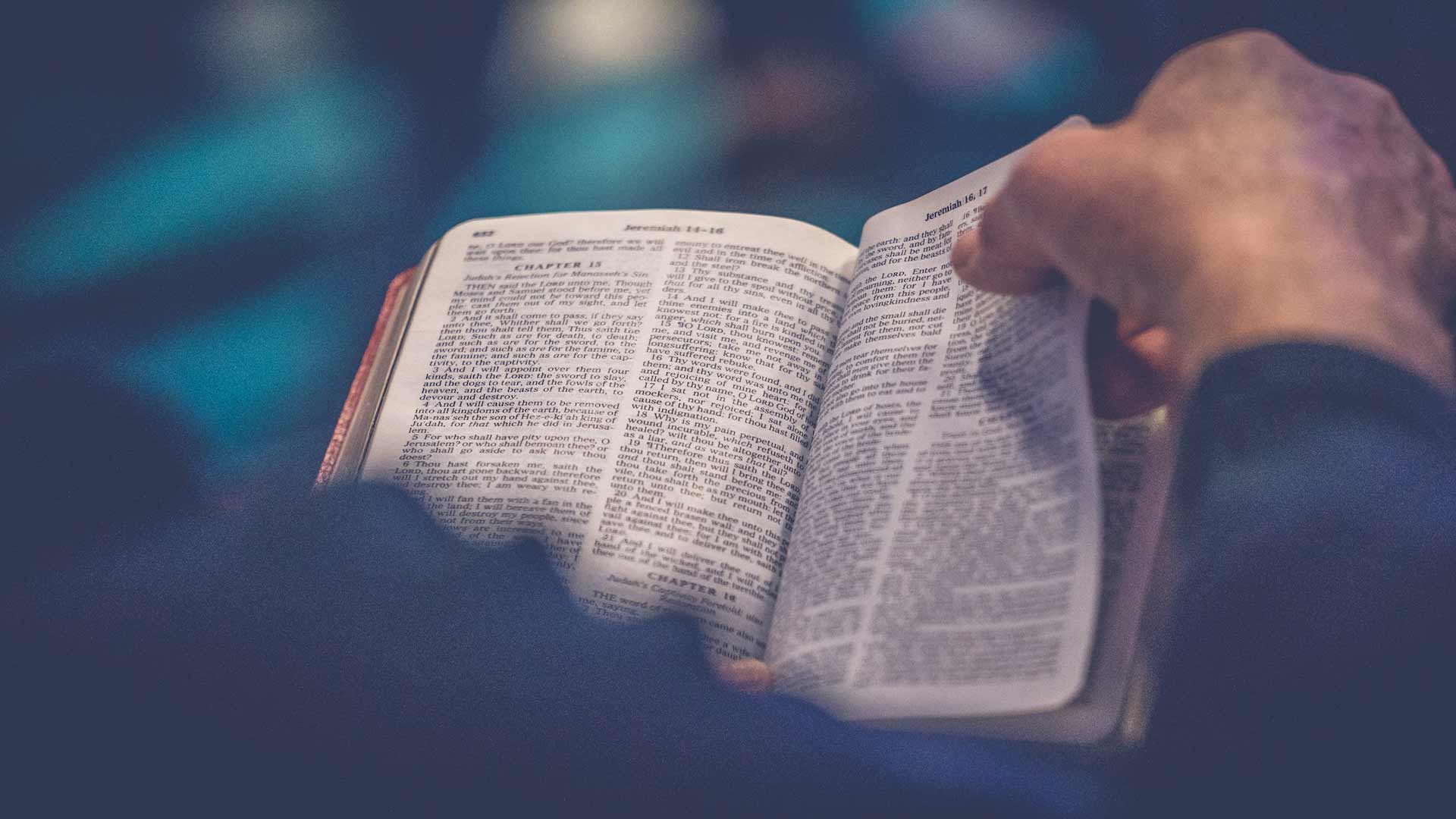Miracles of Motivation
April 1, 2016Motivation,Edison,Inspiration and Perspiration,GeniusEducation,Self-Improvement
If you have ever wondered how others work miracles while we spend time ruing the past or cursing our present, be sure there is only a thin line of separation between those achievers and us. The difference lies in that they know where they are going, while we don’t; they now how to get there, while we are lost in the maze of life. What’s more, we haven’t the fuel that drives them, the fuel that goes by the name of Motivation.
What really is motivation? It’s a whole set of motives that prompts one to act in a particular way. These motives may come naturally to some people; they may have to be induced in others. Let’s say, a young man is naturally inclined to music or sports, and only a little towards academics. He may begin to show some discipline in life if he realizes that even a career in music or sports is academically rigorous.
That is to say, having a goal in sight can motivate us. Of course, happy are those who blend their natural inclination with a profitable life occupation, for they will be self-motivated. In fact, self-motivation is the best form of motivation for a student or employee; it dispenses with coaxing. There is nothing better than finding good reason to do what we are doing; even if difficulties come our way, we will find the way out and, for the love of the final goal, be on track again.
But this is only a model situation; it exists for a fortunate few, while the bulk of people may experience negativity – worry, disappointment, frustration. Motivation itself can feel contrived if there is an element of coercion. That is when one has to either refocus – if one has any stamina or presence of mind left – or one can seek help. Nowadays, counselling is only a step away, be in educational institutions or at workplaces. With a wee bit of interest and initiative, there can easily be a turnaround, and like the proverbial sunflower, we can bask in sunny glory once again.
All things considered, there seem to be two golden rules behind feeling a motivation boost: One, to believe in oneself, and the other, to work smartly. Believing in self is nothing but being grateful to the Good Lord who has made each of us unique. He calls us to open out, unfold, and expand our potentials, for there is none other who can do what we have been destined to do.
However, there is no short cut. Our life mission will be complete only when we have put in our all into what we are doing, keeping at it, without longing for a brainwave. To quote Edison: “Genius is one per cent inspiration and ninety-nine per cent perspiration.” Equally true what that other genius called Pasteur has said: “Chance favours the prepared mind.”
Motivation is a powerful engine; it can move mountains. All we have to do is keep working while we wait for the miracle to happen.
(News and Views, Vol. XI, No. 1, April 2016)
Mama
.............................................................................................................................................................................................................................................................
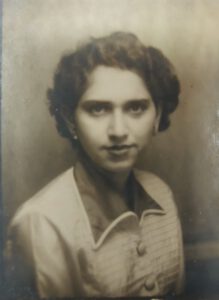 To us, our mother Judite was a fine human being whose external beauty was a reflection of her inner self. She was a simple soul and she led a simple life, with few demands and even fewer expectations. On the other hand, she gave a lot of herself to others, especially her family. Her diminutive stature was compensated by a large heart, and this is what helped her straddle the responsibilities of a large family and her workplace.
To us, our mother Judite was a fine human being whose external beauty was a reflection of her inner self. She was a simple soul and she led a simple life, with few demands and even fewer expectations. On the other hand, she gave a lot of herself to others, especially her family. Her diminutive stature was compensated by a large heart, and this is what helped her straddle the responsibilities of a large family and her workplace.
We were a family of seven. But for all practical purposes we were at least ten, for besides our revered Avó Leonor and our fondly remembered Tia Lídia, relatives studying or working in Panjim would stay with us. Mama welcomed them all. Fondness among the extended family was at its best in those almost carefree days. And since the hand that gives, receives – something Mama said again and again – she received immense help from her sisters, particularly after the 1992 malaria bout that shunted five of us to hospital. This was a very stressful period for Mama; she remained ever grateful to Dr Adélia Costa who helped her out of it, much as she was always grateful to Dr Arcanjo Menezes, who saved her from a tricky medical condition when Sávio was born; as did Dr Roque Ribeiro, on a later occasion.
Mama enjoyed music and the company of people. Blessed with a voice particularly suited to the mandó and religious hymns, she, as a true Curtorcar, took pride in composing mandó for family weddings and anniversaries. Mild-mannered and cordial, she won respect and love, so much so that friends from her office days stayed on with her long into her retirement. She never coveted wealth, power or influence; she was happy with “o pão nosso de cada dia” (our daily bread) – another of her favourite sayings; she was deeply thankful for whatever she had received from the Good Lord, and this kept her cheerful at all times.
A picture of our beloved Mama is not complete without a reference to our dearest Papa. The union of the two through the intercession of St Judas Thaddeus remained blessed, thanks to their devotion to each other and above all to God, to Jesus and His Blessed Mother. The daily Rosary, the Bible, and the Sunday Mass were our staple fare. For our parents, it was also The Memorare and, of late, the Chaplet of Divine Mercy, which they would recite without fail at 3 o’clock: a tradition that Mama kept up till her last days.
Our parents taught us more by example than by precept what it meant to remain united as a family. And a real eye-opener it was when Papa first told us the touching story ‘União faz força’ and Mama chipped in to say that ‘Unity is Strength’ had 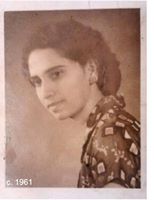 indeed been the theme of her first lesson as a school teacher. Ilídio fondly recalls the time we spent together as a family, sharing experiences, ‘not a waste of time but an investment’.
indeed been the theme of her first lesson as a school teacher. Ilídio fondly recalls the time we spent together as a family, sharing experiences, ‘not a waste of time but an investment’.
You can imagine how difficult it must have been for a mother of five to take care of the household. But neither lack of know-how nor lack of finance was ever a barrier, because Mama did everything with love and out of love. Innovative and creative that she was, she often improvised dishes, cleverly giving them attractive names that magically seemed to enhance the taste. Of gentle ways, her tender hand on our weary foreheads was better than cold water compresses. Her concern for her sons, daughters-in-law and grandchildren knew no bounds. She would not fall asleep until everyone was home. We faulted her for that, but she just couldn’t help it.
Mama was practical minded but her over-concern for us once led her to suggest that we build a big house where all of us siblings and our families would stay together. On another occasion, so anxious was she, not knowing which part of Africa Orlando was stuck in, that, on the telephone, she misheard ‘I am in Johannesburg’ as ‘I am a joyless bird’. She bid him to return quickly, and return he did. What’s more, on his arrival our Benjamin was rushed to the hospital with a highly inflamed appendix…
That was amor de mãe – mother’s love defined. She and I would very often be at our phones at the same time, trying to get across to each other. ‘Telepatia’, she would say... Similarly, her trips to Europe were rather an occasion to be with Ivo and his family, all of whose company she missed.
While she was blessed with talent for music, drawing and craft, she appreciated these better in her grandchildren. They meant the world to her as did her daughters-in-law whom she saw as extensions of herself in what concerned taking care of her five sons! And her daughters-in-law responded with deep love and admiration and indeed gave their best when it came to her last six months of illness. They were five pillars of support to Mama’s five sons.
……………………………………………………………………………………………………………………………………....................................................................................
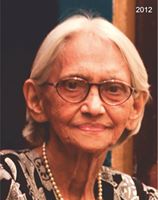 Mama and all of us went through some of the most difficult moments of our life: five and a half months Mama suffered to make us used to the idea that she was going to be no more; and in the process emptied herself completely, to the last drop of her blood, in a spirit of total sacrifice. For the family it was a necessary purgatory, which led us to pray harder than usual and to show our mother that we loved her. For Mama it was, hopefully, her Purgatory on earth, so now we have the moral certainty that she already possesses the Beatific Vision.
Mama and all of us went through some of the most difficult moments of our life: five and a half months Mama suffered to make us used to the idea that she was going to be no more; and in the process emptied herself completely, to the last drop of her blood, in a spirit of total sacrifice. For the family it was a necessary purgatory, which led us to pray harder than usual and to show our mother that we loved her. For Mama it was, hopefully, her Purgatory on earth, so now we have the moral certainty that she already possesses the Beatific Vision.
(Excerpts from my funeral eulogy)
MAMÃ
February 13, 2016Dr Roque Ribeiro,Dr Adelia Costa,Family,Mama,Avó Leonor,Dr Arcanjo Menezes,Tia Lidia,PapaEulogy,Mama
……………………………………………………………………………………………………………………………………....................................................................................

To us, our mother Judite was a fine human being whose external beauty was a reflection of her inner self. She was a simple soul and she led a simple life, with few demands and even fewer expectations. On the other hand, she gave a lot of herself to others, especially her family. Her diminutive stature was compensated by a large heart, and this is what helped her straddle the responsibilities of a large family and her workplace.
We were a family of seven. But for all practical purposes we were at least ten, for besides our revered Avó Leonor and our fondly remembered Tia Lídia, relatives studying or working in Panjim would stay with us. Mama welcomed them all. Fondness among the extended family was at its best in those almost carefree days. And since the hand that gives, receives – something Mama said again and again – she received immense help from her sisters, particularly after the 1992 malaria bout that shunted five of us to hospital. This was a very stressful period for Mama; she remained ever grateful to Dr Adélia Costa who helped her out of it, as much as she was always grateful to Dr Arcanjo Menezes, who saved her from a tricky medical condition when Sávio was born; as did Dr Roque Ribeiro, on a later occasion.
Mama enjoyed music and the company of people. Blessed with a voice particularly suited to the mandó and religious hymns, she, as a true Curtorcar, took pride in composing mandó for family weddings and anniversaries. Mild-mannered and cordial, she won respect and love, so much so that friends from her office days stayed on with her long into her retirement. She never coveted wealth, power or influence; she was happy with “o pão nosso de cada dia” (our daily bread) – another of her favourite sayings; she was deeply thankful for whatever she had received from the Good Lord, and this kept her cheerful at all times.
A picture of our beloved Mama is not complete without a reference to our dearest Papa. The union of the two through the intercession of St Judas Thaddeus remained blessed, thanks to their devotion to each other and above all to God, to Jesus and His Blessed Mother. The daily Rosary, the Bible, and the Sunday Mass were our staple fare. For our parents, it was also The Memorare and, of late, the Chaplet of Divine Mercy, which they would recite without fail at 3 o’clock: a tradition that Mama kept up till her last days.
Our parents taught us more by example than by precept what it meant to remain united as a family. And a real eye-opener it was when Papa first told us the touching story ‘União faz força’ and Mama chipped in to say that ‘Unity is Strength’ had indeed been the theme of her first lesson as a school teacher. Ilídio fondly recalls the time we spent together as a family, sharing experiences: ‘not a waste of time but an investment’.
You can imagine how difficult it must have been for a mother of five to take care of the household. But neither lack of know-how nor finance was ever a barrier, because Mama did everything with love and out of love. Innovative and creative that she was, she often improvised dishes, cleverly giving them attractive names that magically enhanced the taste. Of gentle ways, her tender hand on our weary foreheads was better than cold water compresses. Her concern for her sons, daughters-in-law and grandchildren knew no bounds. She would not fall asleep until everyone was home. We faulted her for that, but she just couldn’t help it.
Mama was practical minded but her over-concern for us once led her to suggest that we build a big house where all of us siblings and our families would stay together. On another occasion, so anxious was she, not knowing which part of Africa Orlando was stuck in, that, on the telephone, she misheard ‘I am in Johannesburg’ as ‘I am a joyless bird’. She bid him to return quickly, and return he did. What’s more, on his arrival our Benjamin was rushed to the hospital with a highly inflamed appendix…
That was amor de mãe – mother’s love defined. She and I would very often be at our phones at the same time, trying to get across to each other. ‘Telepatia’, she would say... Similarly, her trips to Europe were rather an occasion to be with Ivo and his family, all of whose company she missed.
While she was blessed with talent for music, drawing and craft, she appreciated these better in her grandchildren. They meant the world to her as did her daughters-in-law whom she saw as extensions of herself in what concerned taking care of her five sons! And her daughters-in-law responded with deep love and admiration and indeed gave their best when it came to her last six months of illness. They were five pillars of support to Mama’s five sons.
……………………………………………………………………………………………………………………………………....................................................................................
 Mama and all of us went through some of the most difficult moments of our life: five and a half months Mama suffered to make us used to the idea that she was going to be no more; and in the process emptied herself completely, to the last drop of her blood, in a spirit of total sacrifice. For the family it was a necessary purgatory, which led us to pray harder than usual and to show our mother that we loved her. For Mama it was, hopefully, her Purgatory on earth, so now we have the moral certainty that she already possesses the Beatific Vision.
Mama and all of us went through some of the most difficult moments of our life: five and a half months Mama suffered to make us used to the idea that she was going to be no more; and in the process emptied herself completely, to the last drop of her blood, in a spirit of total sacrifice. For the family it was a necessary purgatory, which led us to pray harder than usual and to show our mother that we loved her. For Mama it was, hopefully, her Purgatory on earth, so now we have the moral certainty that she already possesses the Beatific Vision.
(St Inez Church, 13 Feb 2016)
Beacon of hope
December 6, 2015Authentic HopeAdvent,Reflections
ADVENT 2015
Second Sunday
Readings: Baruch 5:1-9; Ps 126: 1-2, 2-3, 4-5, 6; Phil 1: 4-6, 8-11; Lk 3: 1-6
I find today’s Mass readings very meaningful and beautiful…. They are sure to strike a chord with you too, for they talk about hope.
The hopes we commonly express are untainted optimism; we use the word in a careless sort of way.
On the other hand, today’s Readings express an authentic hope, a hope grounded on God’s eternity and Christ’s Resurrection. These are the ultimate truths that bring meaning to our existence. God’s plan becomes plain; we see how He loves and cares for us. We begin to see His presence in world history and in our personal history. We learn to put aside romantic ideas of a life free of sorrow and pain and learn to face life with fortitude….
Not for nothing did Jesus assume our flesh and our weaknesses.
Truly, Advent readings are a beacon of hope in this valley of tears.
Have a blessed second Sunday of Advent!
Reasons for Hope
December 6, 2015Second Sunday of Advent,HopeMass Readings
From Crown to Crown
All things considered, Earth and Eternity are the ultimate realities we encounter; one is perishable, the other is everlasting. There is also a kind of bridge linking the two: how successful we are in crossing it would depend on how well we have walked our pilgrim way!
That there are no gains without pains, or that nothing comes for free, is a lesson we imbibe early in life. As aspirants to success (which means different things to different people), all of us take that saying seriously, lest we miss out on something special or precious. And that’s precisely what sets off the rat race we are accustomed to seeing in our day and age; and that’s what is behind our running from pillar to post in a desperate bid to make even the impossible possible in our lives. We seldom realize that frenziedly going out to secure a few pearls we could risk the loss of a fortune — for example, love in the family or peace in society!
Even if we aspire legitimately “to leave behind us footprints on the sands of time”, as Longfellow put it, it is important to have great souls as models to help make our lives sublime. As for us, we are fortunate to have in Our Lord Jesus Christ a model par excellence: not only does He teach us how to negotiate the twists and turns of our earthly existence but also points the way to our eternal destination. So if He be the lighthouse, no ship can go under.
Truly, the gains we seek in the world are but vanity of vanities. Hence, omnia vanitas — all is vanity — in the Book of Ecclesiastes is a pointed reference to the ultimate uselessness of the human effort; it is a direct opposite of what our Divine Master came into the world for and did: emptied Himself for our sake and unto death. This extreme sacrifice of love may not be our cup of tea — ordinary creatures like us believe we are here to live! But, surely, at least a pale imitation of that sacrifice is not only possible but also highly desirable.
A mother who sacrifices a night’s sleep for her child laid up in bed and the physician who has walked the extra mile to see that that child recovers quickly have both done their bit to partake of Calvary. An earnest desire on our part to put up with the dark nights of our souls and to make that ascent to Mount Carmel is an exercise always pleasing to our Father in Heaven. Paradoxical though it may seem, it is in dying to our selves — to our sins — that we live better lives! And if in business they believe that a ‘you attitude’ helps business grow, how much more should we as Christians think of a ‘You, Lord’ attitude so that we may grow in favour with the Only One that finally matters! This can send us several notches up the ladder of love and have peace spring in us.
This Lent, then, let us ask the Lord to increase our faith, our hope, our charity…. For our part, let us try to transform our own little crowns of thorns into crowns of patience, resignation and forgiveness. Let us ask God to grant us a spirit of detachment from worldly things; the gift of understanding the predicament of the less fortunate; a feeling of compassion towards all and sundry, and a dose of cheer even while in the thick of trials.
Come Easter, let us convert our sorrows into joys. If we don’t we will have only ourselves to blame. After all, wasn’t Our Lord’s Cross the biggest of them all... and for no fault of His! Let us straighten our paths for, if we don't, the crown of thorns will be here to stay.
Finally, let us be quick to realise how truly glorious it will be if — in the manner of Our Lord — after having worn the crown of thorns and clung to the old rugged Cross, we can exchange it some day for the resplendent crown awaiting us on the other side of that bridge.
(Editorial, The Stella Maris Bulletin, Vol. VI, No. 4, Mar-May 2013. Reprinted in Renovação, Vol. LI, No. 5, 1-15 Mar 2013)
Education towards Peace
December 1, 2012Moulding children's behaviour,Atoms for Peace,Education,Peace of mind,PeacePeace,Education
If you gift a child a toy gun and see him wield it with fascination; if you let another watch a violent movie scene without regret; or, being witness to a real time incident you look the other way, it’s quite likely you are contributing to a doomed future….
But then, if peace is a value so desired and found essential, why doesn’t it come easily to us? That’s because the negative side of human nature is more dynamic than its positive side, making the not-so-good things of life eye-catching, the good things hardly noticeable. And with negativity all over the media, generations have been imbibing the wrong values by default.

Is there a decisive role here for formal educators? Some may say that moulding children’s behaviour is better left to their parents, but it is undeniable that few are equipped with skills for the task. Hence teaching institutions from kindergarten to university are looked upon as the standard bearers. Teachers have the know-how and the opportunity to perform; and, thanks to their close association with young minds, they are in a better position to influence and impart them with both hard and soft skills towards a well-rounded personality.
If all of our education were geared to no more than promoting peace the exercise would have been worth the while, for, alas, our planet is presently on a restless track. Not a day passes without news of domestic violence, fierce competition at the workplace, antagonism among neighbours, road rage, police brutality, cruelty to animals, bloodshed within communities and war readiness between countries. All good enough reasons to regard Peace as a value par excellence!
War is the opposite of peace; but peace is not merely an absence of war, or a passive condition synonymous with lassitude or complacency. Rather, it is a positive state, promoting cordiality, harmony, fulfillment, happiness. Peace thus becomes a catalyst of progress. It may well be considered the mother of values, for without it no other value can succeed; it helps in creatively solving problems, negotiating, resolving conflicts, building teams and favourably influencing others.

With peace comes a serene mind, pleasant attitudes among people, contented lifestyles and harmonious living. Peace cannot be learnt in a vacuum; it must be seen, felt, experienced in the midst of people. Peace cannot be a subject in the curriculum, to be tested at the end of a semester; it must be imbibed, picked up straight from the human environment and lived out until it becomes second nature, a state of mind!
Peace overtures are possible only when coming from within. Peace of mind – much sought after in our stressed world – happens after one has reflected on oneself and accepted one’s place in the universal scheme of things. Then one can pray with St Francis of Assisi: ‘Lord, make me an instrument of your peace.’
Peace costs no money but just some effort in the form of kindness, respect, tolerance and forgiveness towards the other. Especially because this easily spreads goodwill, it is indeed ironical that ‘Atoms for Peace’ should be a favourite theme with diplomats, throwing all peace movements to the winds…. Educators would do well to desist from prescribing the same for essays in schools and colleges!
(Editorial, Pernem College News & Views, December 2012)
Papa - 1
July 1, 2011Third Millennium,Curtorim,Aldonã,Leonor Zoraide do Rosário e Sousa,Polícia Judiciária,Administração Civil,Judite Teresa da Veiga,Neurá-o-Grande,Tomaz Nuno Francisco Carmo de Noronha,Fernando do Carmo Heitor de NoronhaPersonality
Fernando do Carmo Heitor de Noronha, filho primogénito de Tomaz Nuno Francisco Carmo de Noronha, de Neurá-o-Grande, e Leonor Zoraide do Rosário e Sousa, de Aldonã, nasceu em casa dos avós maternos. Casado com Judite Teresa da Veiga, de Curtorim, tinha o Curso Complementar dos Liceus (de Letras e de Ciências).
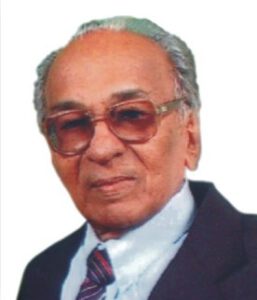
Funcionário público (do Quadro da Administração Civil e, mais tarde, do da Polícia Judiciária), depois de aposentado, nos anos 70, esteve ligado a O Heraldo, o último diário da língua portuguesa em Goa, fundando depois, com outros, em 1983, o semanário A Voz de Goa, que veio a ser o último periódico expresso no idioma luso. Dedicado à língua portuguesa, entre os anos 1985-88, foi professor-convidado de Português no Xavier Centre of Historical Research (Miramar/Porvorim) e no Dhempe College of Arts & Science, Miramar.
Em 2002, publicou o seu primeiro livro, Momentos do meu Passado, sob a chancela da casa editora Third Millennium, fundada pela família e de que era parceiro, sendo talvez a única casa a publicar livros em português nesta parte do mundo. Um segundo volume de memórias – Goa tal como a conheci – será lançado dentro de meses. E ainda tem vários inéditos.
Era pai/sogro de Óscar/Isabel, Ilídio/Imelda, Ivo/Tânia, Sávio/Olívia e Orlando/Tina, e avô de quinze netos (7 rapazes e 8 raparigas).
(Apontamentos prestados à Revista Ecos do Oriente, de Loures, Portugal, cujo director, Mário Cirilo Viegas, publicou, com acrescentamentos que não estão integrados no presente texto, sob o título de ‘Fernando de Noronha: Um Indo-Português de Caráter’, na edição de Jul-Set de 2011 (Ano VI, N.º 23), com capa e editorial dedicados a meu Pai)
The Monk and the Bird
Once upon a time there lived in a monastery a very pious and diligent monk called Urban. One day he was entrusted the keys to the library, which he began to look after like a treasure. There he read many, many books, and wrote a few fine ones himself. One of the books that he avidly read was the Holy Bible. In it he found these words of St Peter: “Before God one thousand years are but one day and one night of vigil.” To the young monk this seemed impossible, something that he could not understand. From then on he was tormented by terrible doubts.
One morning, as he was leaving the library for the convent garden, he noticed a little, colourful bird searching for something to eat. No sooner had he tried to approach and grab the bird than it flew to a nearby tree and burst into a melodious song. It was not shy and even allowed the monk to come very close to it; but then it would fly from tree to tree. For some time the monk kept close track of the bird: its song grew clearer and sweeter every time but it would never come within grasp.
That made the monk to leave the garden and follow the charming bird into the forest; but at a certain moment he gave up the chase and decided to return to the monastery. What a surprise awaited him! The monastery now seemed completely different: Everything had grown in size and beauty – for instance, the main building, the garden, and in place of the chapel there was a large and majestic cathedral of three towers. Everything was so odd that he took it for witchcraft.
He walked up to the main gate and pulled the doorbell cord. The monk-in-attendance, unknown to him, was troubled on seeing him. The monk entered the convent and crossed the cemetery where he recognized not a single tombstone. Arriving at the cloister he spotted a group of monks and walked towards them. On seeing him they drew back frightened, with the exception of the abbot who, strangely, was not his abbot but someone younger. Holding a cross the abbot cried, “In Christ’s name, oh ghost, say who you are! And what do you seek, you who have come from the world of the dead?”
The monk was now trembling from head to toe. Looking downwards, he noticed that his beard had grown long and the library keys still hung down his waist.
To the other monks it seemed that something miraculous was happening. Very respectfully, they put him on the abbot’s seat while one of them went to the library to fetch the monastery chronicles, from which he read out to all. It was recorded that three hundred years earlier a monk called Urban had disappeared without a trace; nobody could say for sure if he had run away or some disaster had come his way.
“Oh wild bird, was this your song?” said the old monk. “I chased you only for three minutes and listened to your song – and three centuries passed by! Now I understand, and I adore Thee, Oh God, while I turn to dust!”
On uttering these words, he bowed his head, his body turning into a pile of ash!
(Translated from the Portuguese, as a tribute to my father, Fernando de Noronha (1920-2011), who told me this story when I was between six and seven years of age)
(First published in News & Views, newsletter of the Regina Angelorum Cultural Association, Miramar, 1992, and revised for publication in The Stella Maris Bulletin, Vol. 5, No. 1, July 2011)
Time for God
Cosmic space and time can be baffling. Remember the legend of the monk who, after wandering in what he thought was the close vicinity of his monastery, returned to it only after a few hundred years?
The story illustrates that we are no masters of our time, no pilots of our future; it also invites us to reflect on how we should be using our time and talents for our material and spiritual well-being. Finally, the story inspires deep gratitude to our Creator for all the time that He has made available to us.
It is often a question of priorities. If we come to realize that God holds the key to our destiny, we will have no difficulty in resetting our priorities; in fact, we will be naturally inclined to give God the space and the time that is due to Him.
Let us consider our holidays, and how we have spent them: Weren’t they dotted with ‘camps’ teaching us music, dance, painting, and so on, for personality development? But did we also realize that May was a month dedicated to Mary Our Mother? Some of us must have indeed spared some time to appreciate the Message of Fatima…! While we revelled in picnics and excursions to far-off places, was a pilgrimage to a holy place also part of our itinerary?
So much for our holidays…. Now about our careers and how we get there! We concentrate – and rightly so – on what we wish to achieve; but any idea what we may stand to lose too? If we get there by hook or crook, we stand to lose our morals; if we are so intensely absorbed by our careers that we find little time for prayer, we stand to lose the very purpose of our lives….
‘What does it profit a man if he gains the whole word and loses his soul?’ was a turning point in the life of St Francis Xavier. Without suggesting that we head for the nearby forest to spend the rest of our lives there, it is strongly recommended that we ensure a healthy balance in life. Let us not run away from the world; yes, by all means let us be in the world but let us not be of the world!
Let us fine-tune our lives while it is time. The great balancing act can be achieved only with divine help. We have the sacraments; let’s use them to be one with God, imbued with His spirit. Continually seeking God provides the ultimate meaning to our lives.
(Editorial, The Stella Maris Bulletin, Vol. 5, No. 1, July 2011)

